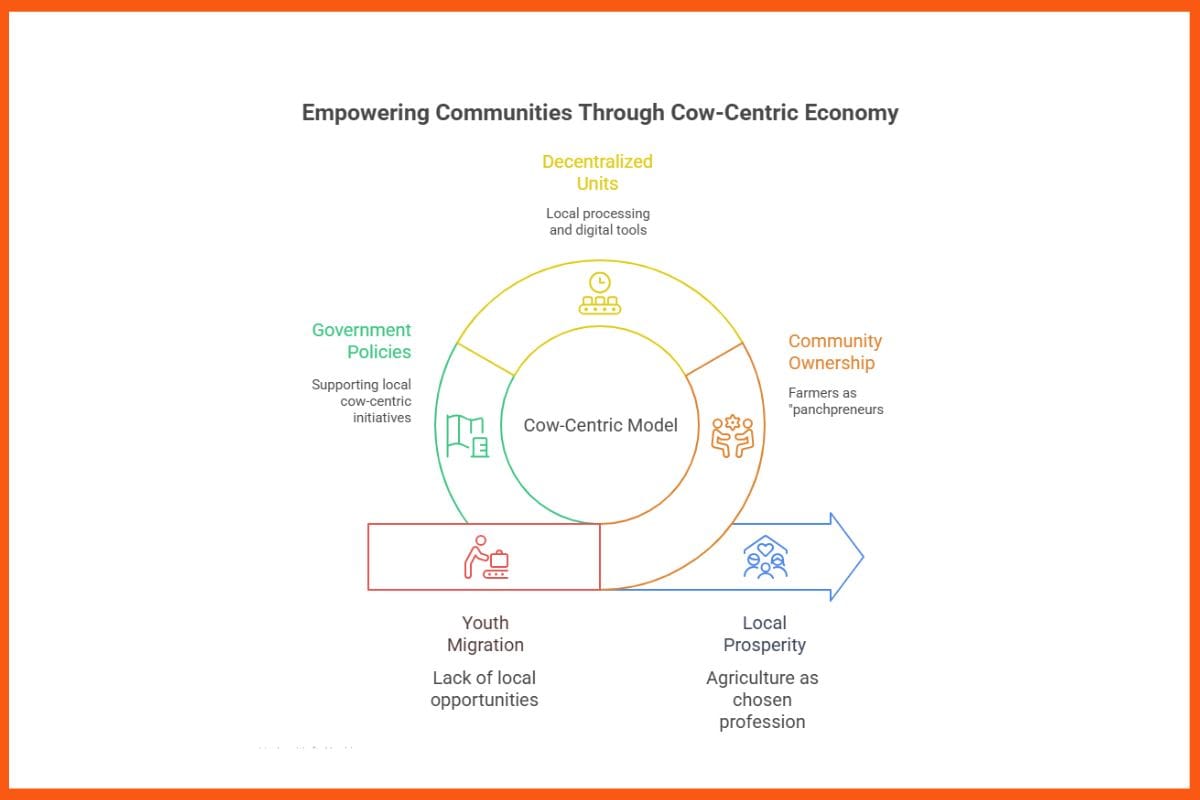This article has been contributed by Dr. Arjun Sharma, Founder and CEO, Gomini
If there is one sector that has quietly held Bharat together through centuries of upheavals, it is agriculture. In FY25, the sector’s share of the gross domestic product (GDP) was 17.9%. While the agriculture sector is not immune to hardship, it offers continuity, especially with sustainable practices. This resilience becomes even stronger when cows are placed at the heart of the system. Indigenous breeds do not just produce milk. They provide compost, bio-fertilizers, natural pest repellents, biogas, and wellness products through the age-old science of panchgavya. Such diversity of output cushions farming families against uncertainty, and that is why a cow-centric model is an economic safety net for the future.
Rethinking What “Growth” in Farming Should Mean
For years, success in agriculture has been defined by how much is produced rather than by what is produced and at what cost. More acres under chemical crops, more liters of milk per cow, more tons of grain to sell cheaply—this obsession with volume has pushed farmers into cycles of debt and soil into exhaustion.
Indigenous cows invite a rethinking of this approach. Breeds like Gir, Sahiwal, and Tharparkar may not yield the highest volumes of milk compared with exotic imports, but what they provide is richer, healthier, and sustainable. Their dung nourishes the land, their urine protects crops naturally, and their milk commands a premium in conscious markets. When farmers focus on quality through organic methods, they move away from a race-to-the-bottom model and toward products that carry cultural value and global appeal.
This shift is not easy. It requires patience, investment in ethical care, and trust in traditional knowledge. The payoff, however, is significant: healthier soil, healthier families, and goods that stand out in a crowded market where consumers are weary of artificial uniformity.

Where Technology Meets Ancient Wisdom
A common misconception is that embracing indigenous farming means rejecting modern tools. The truth lies in the opposite direction. The future depends on how well tradition is married with technology.
Consider small herds of hundred odd indigenous cows in a village. On their own, they might not seem transformative. When combined with app-based health tracking, AI-assisted breeding support, or transparent record systems, they become engines of prosperity. Technology helps farmers reduce disease, monitor feed, and build trust with buyers who want to know where their food comes from. People can engage directly with farmers through digital platforms these days. Tradition provides the soul, while technology provides the structure.
Villages as the New Hubs of Enterprise

For a cow-centric economy to succeed, it cannot remain a top-down corporate exercise. Real transformation happens when communities themselves take ownership. Farmers must be seen not merely as cultivators but as entrepreneurs—or rather “panchpreneurs”—who run integrated units around indigenous cattle.
This vision matters most in regions where young people migrate due to a lack of opportunity. A decentralized, cow-centric model offers them a chance to stay rooted, to earn with dignity, and to build prosperity at home. Community sheds, local processing units, and transparent digital tools can turn villages into small hubs of enterprise. Even government policies can play a significant role in situations like these. When this happens, agriculture is no longer a last resort but a chosen profession that inspires pride and purpose.
Policy Support: A Good Start, But Execution Matters
Government programs like the Rashtriya Gokul Mission show that policymakers are aware of the importance of indigenous breeds. Subsidies, conservation efforts, and breed improvement schemes are all welcome. The real question is how consistently these policies are implemented on the ground. Farmers often face bureaucratic hurdles, corruption, or uneven rollouts that dilute the intended impact.
The responsibility is twofold. The government must strengthen transparency and ensure that benefits actually reach small and marginal farmers. At the same time, entrepreneurs and private players must respect local ethos. This is not a sector for shortcuts or quick wins. It requires building pilots with farmer input, scaling slowly, and weathering inevitable challenges with patience. If leaders in this space build with integrity, it can endure for generations.
Toward a Future Rooted in the Past
The choice before Bharat is clear. It can either imitate industrial farming systems that have failed elsewhere, leaving behind ecological damage and broken communities, or it can draw from its own roots to build something more sustainable. A cow-centric economy offers not just stability but meaning. It ties communities back to the soil, to biodiversity, and to a culture that has always seen farming as more than a transaction.
This is not nostalgia. It is pragmatism. Cows as asset multipliers, technology as an enabler, and communities as the center of change together form a model that can withstand economic storms and create livelihoods with dignity. Reviving Bharat’s agrarian roots in this way is not simply about agriculture. It is about reviving the soul of the nation itself.


Leave a Reply